The splendid excesses of spring in the garden are abundantly evident in May, where blooms explode from every corner, and subtle charms are easily overlooked. I’ve made considerable efforts in recent years to plant for flowers in autumn and winter, but still there are more spring flowers than can be readily listed. With cool spring temperatures this April and May, there has been a delightful succession of flowers, with many blooms persisting a week or two longer without warm weather to speed their decline. Dogwoods flowered for nearly a month, and azaleas that began to bloom in early May are only beginning to fade.
The ribbon-like flowers of the native fringetree (Chionanthus virginicus, above) lack heavy substance, so the fragile blooms often decline quickly with extreme warm or cold temperatures that are typical through the spring. But, this year they are fading slowly, losing vigor now because the new foliage is forcing its way in rather than from the cold. Occasionally, I see articles touting the Chinese fringetree (Chionanthus retusus), but I see no benefit in planting this rather than the extraordinary native. Chinese fringetree flowers a few weeks earlier than the native, so if both are planted the garden will have fringetree flowers a few weeks longer, but if the selection must be one or the other, the simple choice should be the native. 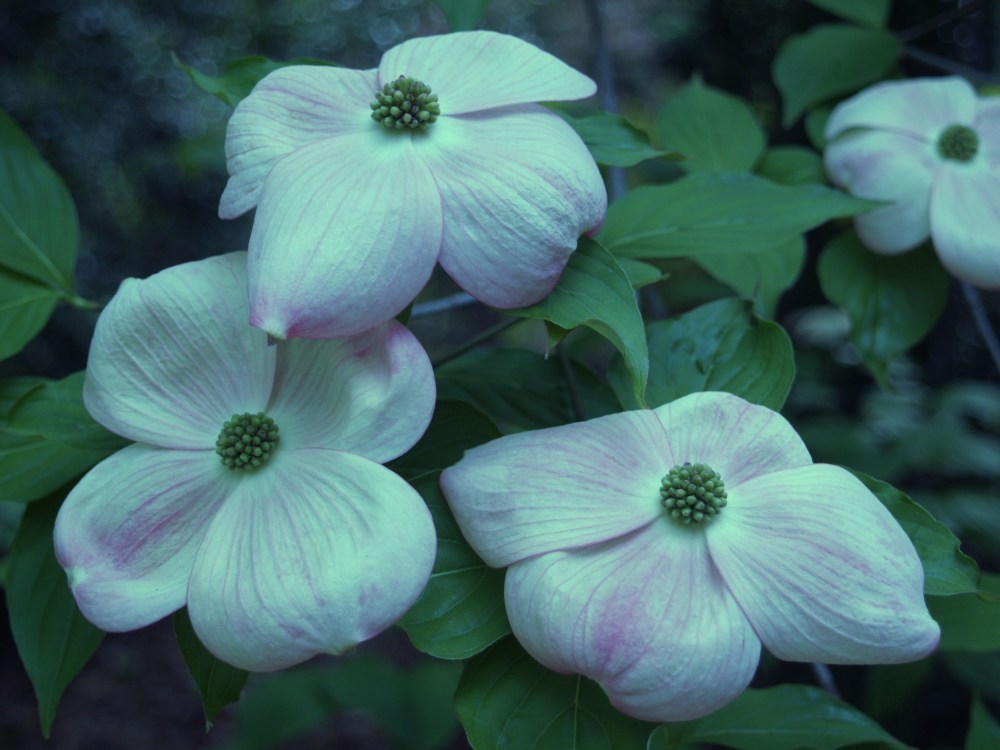
The Rutgers’ hybrid dogwoods (Cornus ‘Rutgan’ Stellar Pink, above) are in full flower, and soon will be fading as the Chinese dogwoods come into bloom. In my garden, the vigorous, upright growing variegated ‘Samaritan’ (Cornus kousa ‘Samaritan’) has refused to bloom for several years (and perhaps it has never flowered, though I can’t recall), while the similar ‘Wolf Eyes’ dogwood flowers dependably. If you care to look back to previous years, I’ve probably written something about the late flowering dogwoods every year, but I’ll spend little time on this today so I can cover it again in more detail in a few days. For now, let it suffice to say that I recommend the hybrids and Chinese dogwoods in addition to planting our superb native, but for cautious gardeners who are concerned by the native’s poor disease resistance, these are excellent substitutes.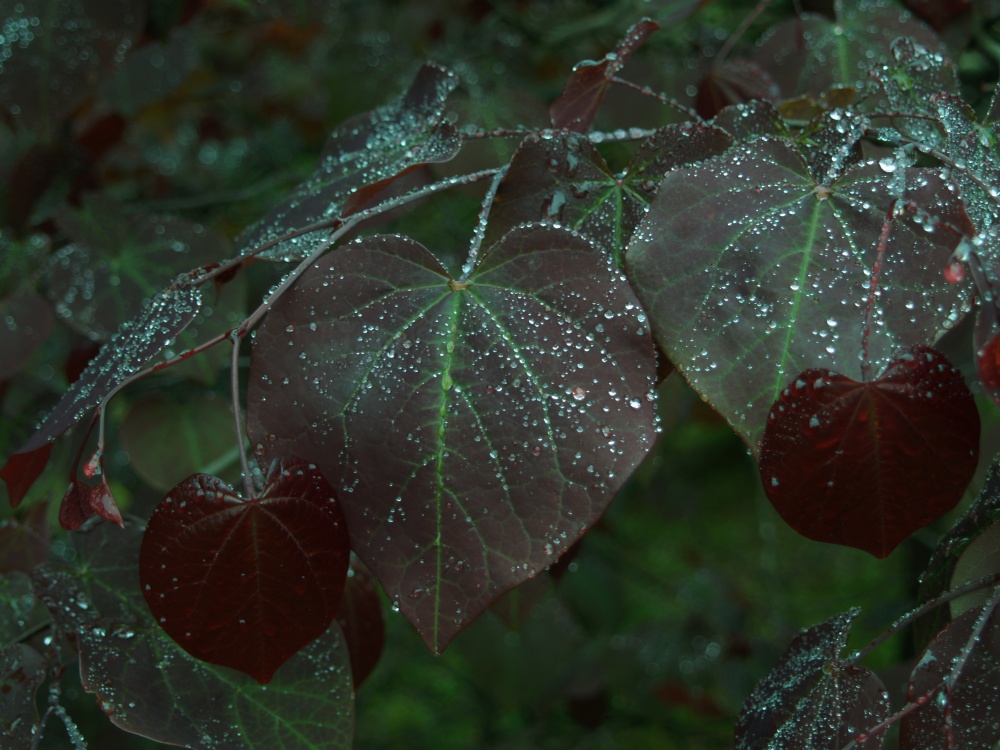
While flowers are the main attraction of the spring garden, there are other delights that must be pointed out. The new foliage of ‘Forest Pansy’ redbud (Cercis canadensis ‘Forest Pansy’, above) is an annual treat, with the newest leaves an extraordinarily glossy, deep red-purple. The gloss fades as the leaves mature, and by mid summer the color often fades to a mottled green-red that is a considerable disappointment after witnessing the spring foliage. 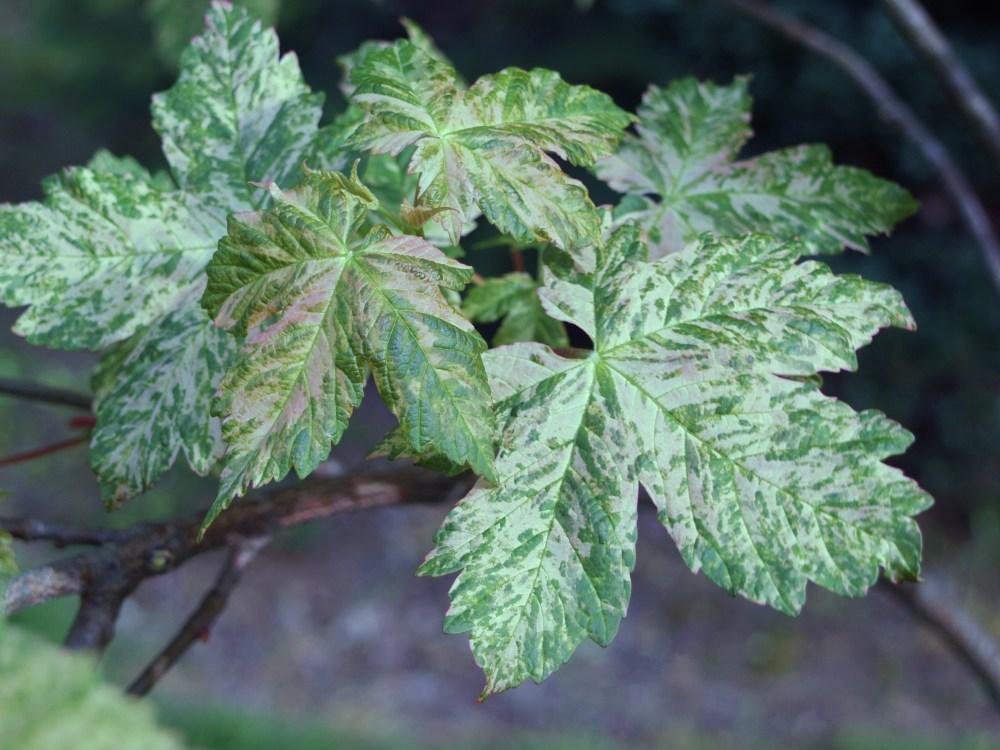
The variegated foliage of the Sycamore maple ‘Eskimo Sunset’ (Acer pseudoplatanus ‘Eskimo Sunset’, above) fades only slightly from its spring glory as the summer heats up. The splashes of pink turns to green and white variegation, but this is still quite nice. The typical, green leafed Sycamore maple grows to be a large forest tree, but the lack of chlorophyll stunts ‘Eskimo Sunset’ to grow slowly to only thirty feet tall. With a bit of protection from the late afternoon sun the variegation stays stronger, but I have not experienced the burning of leaves that is cautioned about in recommending that ‘Eskimo Sunset’ be given a shaded setting. It would be unfortunate to be distracted by the garden’s many blooms to miss this marvelous foliage.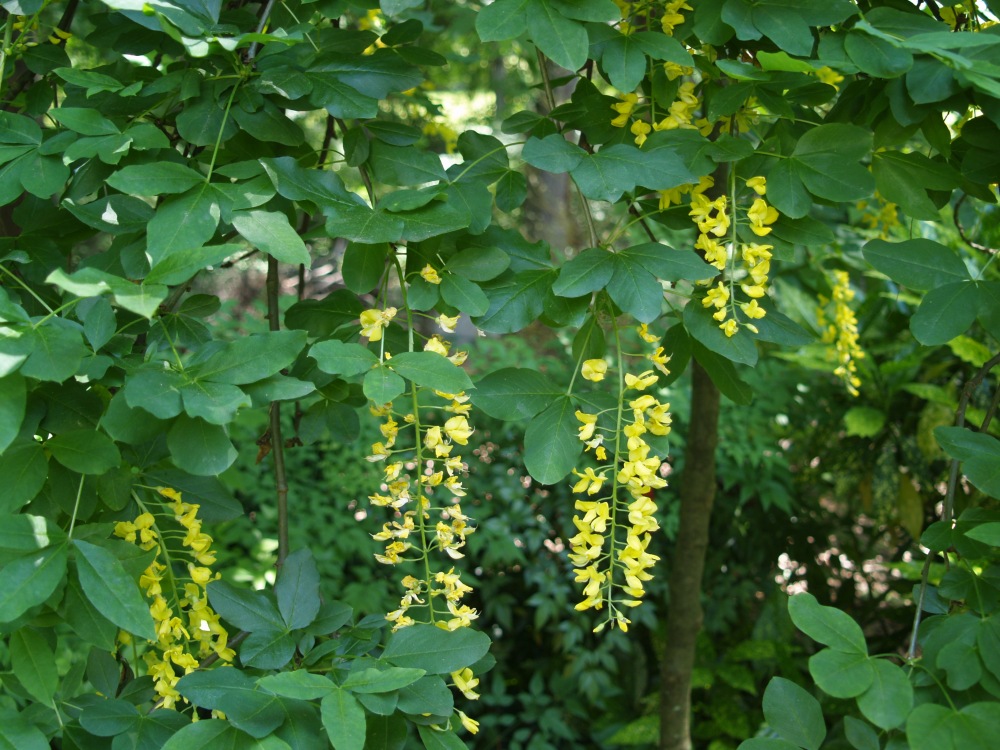
At a point several years ago I was ready to give up on the weeping Golden Chain trees (Laburnum x watereri ‘Pendula’, above). Their growth was weak and flowers were scarce, and I decided they must not like the Virginia humidity. But, just as I made this pronouncement the two small trees began to grow with vigor, perhaps sensing their imminent demise. In less humid parts I assume this tree grows like a weed, but in my garden it took only a little patience to be rewarded with a fine tree, though it still doesn’t flower heavily.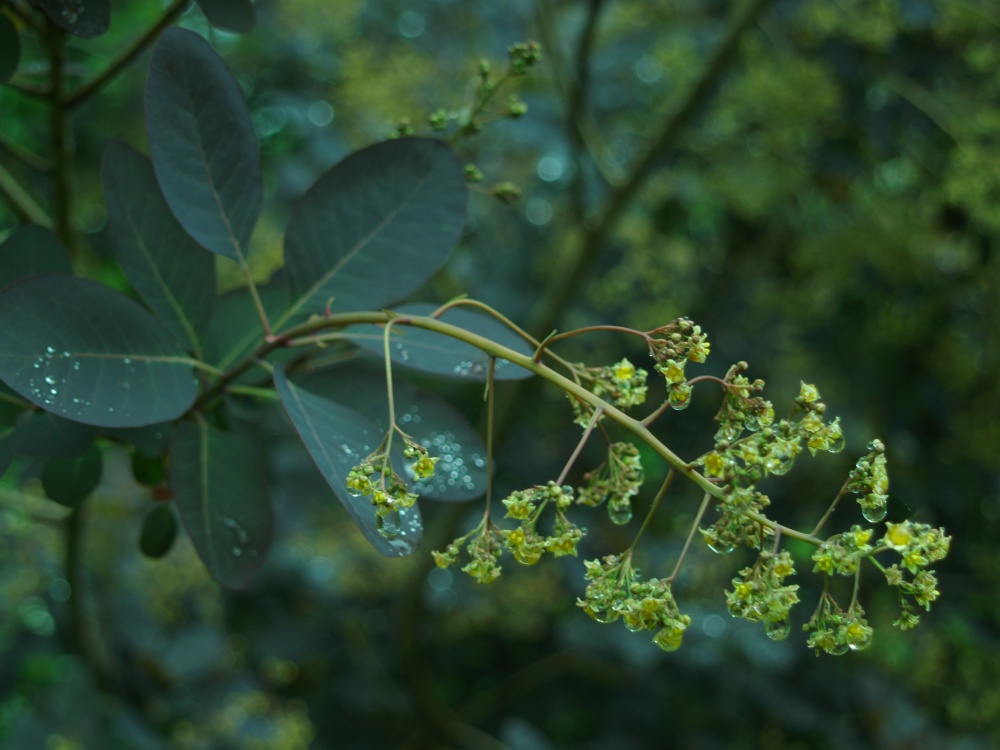
The purple smoketree (Cotinus coggygria, above) was misplaced in too shaded a spot from the start, but I wanted its darkly colored foliage, and dark, lacy flowers as a contrast to a golden Lawson cypress. Smoketrees have an irregular habit that is best tamed by pruning it severely every year or two, and when left alone and planted in too much shade its branches wind around and over anything in its path to the sun.
This is not the worst mistake I’ve made, but the result is that the foliage of the purple smoke is difficult to see, and the blooms are barely there, the inevitable result of cramming too many good things into too small a space.
Beautiful! Thanks for bringing the beauty of your garden here in my office.